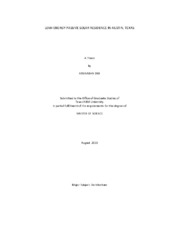| dc.description.abstract | From the various studies, it can be concluded that the excessive summer heating and the humidity are one of the major problems of the hot, humid climatic region. The literature review for this study shows that natural ventilation alone cannot meet year long optimum indoor comfort in buildings. This research, through a design exercise, intends to verify whether a naturally ventilated house, in hot humid region of Austin, TX, can enhance its passive cooling potential through double‐walled wind catcher and solar chimney.
In this research, a passive solar residence has been designed. Two designs have been explored on the chosen site: a basecase design without the wind catcher and solar chimney and another design with wind catcher and solar chimney. In the designcase, the placement of the wind catcher and the solar chimney has been designed so that a thermal siphon of airflow inside the building can be created. The design might show that there will be a natural airflow during the time of the year when natural wind does not flow. Moreover, the double walled wind catcher will resist the cool winter wind due to its shape and orientation. In the design, the placement of the wind catcher and the solar chimney has been done so that a thermal siphon inside the building can be created. Therefore, inside the home, there will be a natural airflow during the time of the year when natural wind does not flow. The double walled wind catcher has been designed and placed according to the orientation of the building in order to achieve the optimum wind flow throughout the year. The solar chimney has been placed in a certain part of the building where it can get maximum solar exposure.
By comparing two cases, it can be clearly said that there will some kind of changed indoor comfort level. Since the potential of the design has been judged through perception, a computational fluid dynamics simulation analysis for a year is to be done. | en |


